Ten positively charged particles are kept fixed on the x-axis at points x=10cm, 20cm, 30cm, …, 100cm. The first particle has a charge 1.0×10−8C, the second 8×10−8 C, the third 27×10(−8)C and so on. The tenth particle has a charge 1000×10−8C. find the magnitude of the electric force acting on a 1 C charge placed at the origin. Solution in Gujrati
F=F1+F2+F3+……..+F10=9×109×[1.0(0.10)2+8(.20)2+27(.30)2+………1000(1.0)2]10−8
=9×109×10−810−2[1+2+3+……10]
9×103×55=4.95×105N
Topper's Solved these Questions
- ELECTRIC FIELD AND POTENTIALBOOK - HC VERMACHAPTER - ELECTRIC FIELD AND POTENTIALEXERCISE - Objective 2
8 Videos
- ELECTRIC CURRENT THROUGH GASESBOOK - HC VERMACHAPTER - ELECTRIC CURRENT THROUGH GASESEXERCISE - Exercises
23 Videos
- ELECTROMAGNETIC INDUCTIONBOOK - HC VERMACHAPTER - ELECTROMAGNETIC INDUCTIONEXERCISE - EXERCISE
9 Videos
Similar Questions
Mark out the correct potons.
View SolutionA discharge tube contains helium at a low pressure. A large potential difference is applied across the tube. Consider a helium atom that has just been ionized due to the detachment of an atomic electron. Find the ratio of the distance travelled by the free electron to that by the positive ion in a short time dt after the ionization.
View SolutionShown a metallic square frame of edga a in a vertical plane. A uniform magnetic field B exists in the space in a directon perpendicular to the plane of the figure. Two boys pull the opposite corners of the square ot deform it into a rhombus. They start pulling the corners t t=0 and sisplace the corners at a uniform speed u. (a) find the induced emf in the frame at the instant when the angles at these corners reduce to 60∘. (b) find the induced current in the frame at this instatnt if the total resistance of the frame is R. (c) Find the total charge which flows through a side of the frame by the time the square is deformed into a straight line.
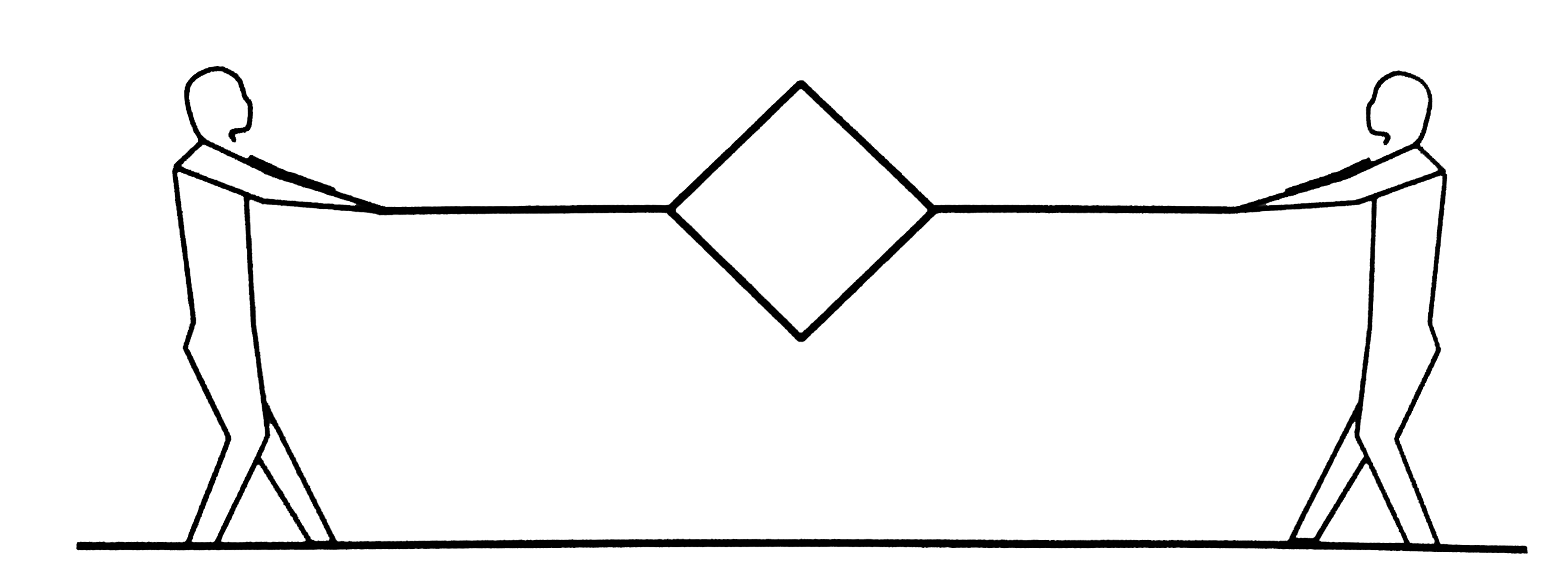
View SolutionTen positively charged particles are kept fixed on the x-axis at points x=10cm, 20cm, 30cm, …, 100cm. The first particle has a charge 1.0×10−8C, the second 8×10−8 C, the third 27×10(−8)C and so on. The tenth particle has a charge 1000×10−8C. find the magnitude of the electric force acting on a 1 C charge placed at the origin.
View SolutionTwo point charges q_(1) and q_(2) , of magnitude +10^(–8) C and –10^(–8)C , respectively, are placed 0.1 m apart. Calculate the electric fields at points A, B and C shown in Fig. 1.14.
View SolutionTwo point charges q1 and q2, of magnitude +10−8C and −10−8C, respectively, are placed 0.1 m apart. Calculate the electric fields at points A, B and C shown in Fig.
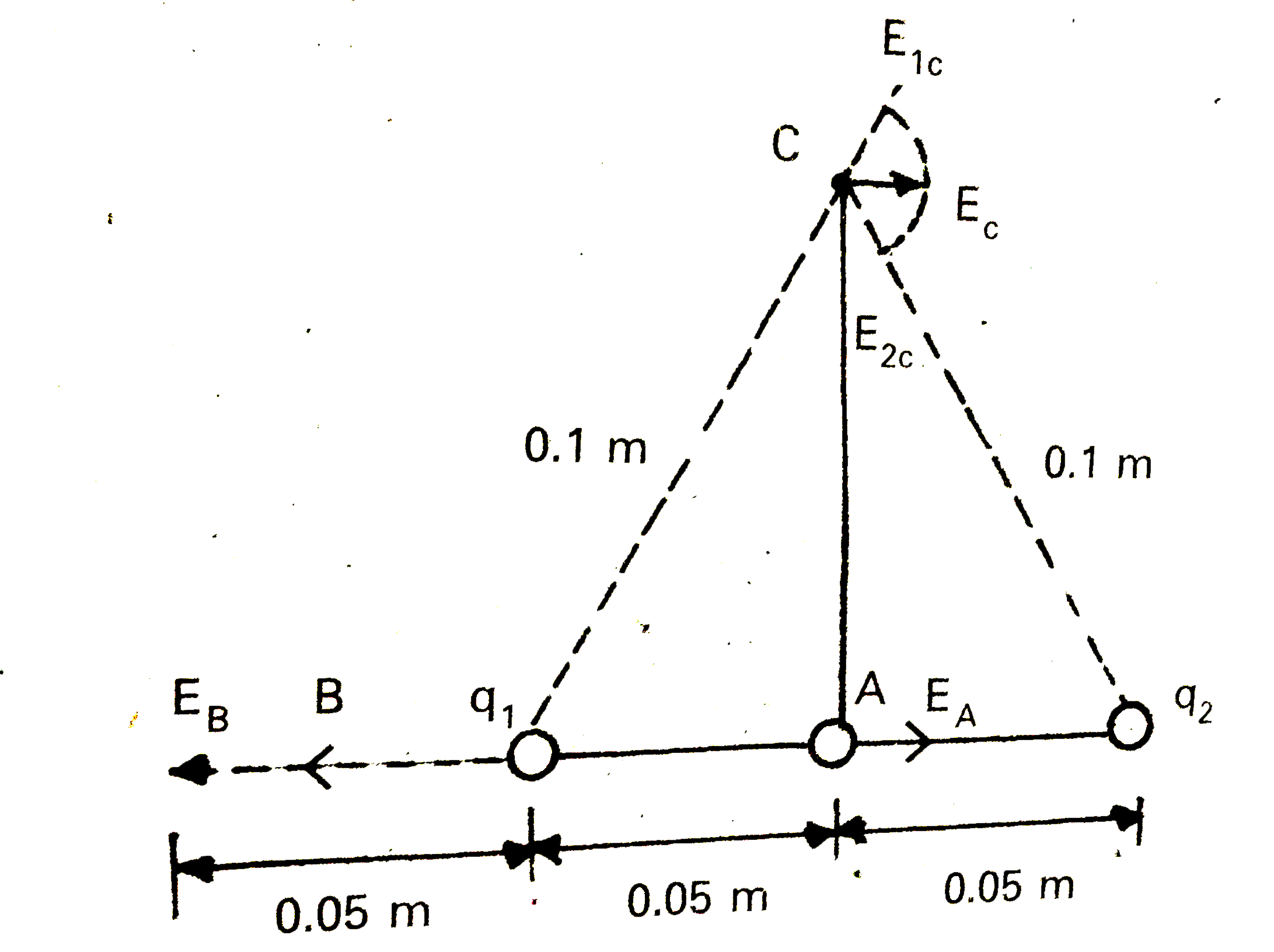
View SolutionTen charged particles are kept fixed on the X axis at point x = 10 mm, 20 mm, 30 mm, ......... 100 mm. The first particle has a charge 10−8 C, the second 8×10−8C, the third 27×10−8Cand so on. The tenth particle has a charge 1000×10−8C. Find the magnitude of electric force acting on a 1 C charge placed at the origin.
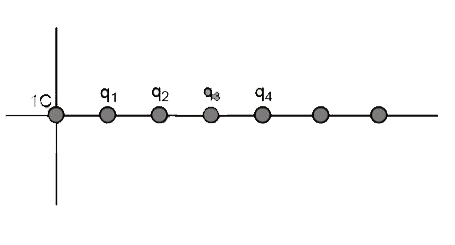
View SolutionTwo point charges q1andq2, of magnitude +10−8Cand−10−8C, respectively, are placed 0.1 m apart. Calculate the electric fields at points A, B and C shown in figure.
View SolutionTwo positively charged particles fixed in place on an x axis. The charges are q1=1.60×10−19Candq2=3.20×10−19C, and the particle separation is R = 0.0200m. What are teh magnitude and direction of the electrostatic force →F12 on particle 1 from particle 2?
View SolutionTwo charged particles are attached to an x axis: Particle 1 of charge -4.00 xx 10^(-7) C is at position x = -5.00 cm and particle 2 of charge +4.00 xx 10^(-7)C is at position x = 10.cm. Midway between the particles, what is their net electric field in unit-vector notation ?
View SolutionTwo charged particles lie along x axis as shown in Fig. The particle with charge q2=+8μC is at x = 6.00 m, and the particle with charge q1=+2μC is at the origin. Locate the point where the resultant electric field is zero.

View SolutionTwo point charges q1 and q2 of magnitude + 10−8 c and −10−8 c respectively are placed 0.1 m apart calculate the electric fields at points a, b and c

View SolutionTwo point charges q1 and q2 of magnitude + 10−8 c and −10−8 c respectively are placed 0.1 m apart calculate the electric fields at points a, b and c
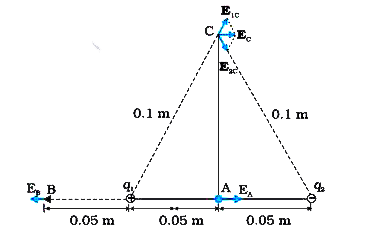
View SolutionTwo point charges q1andq2, of magnitude +10–8Cand–10–8C, respectively, are placed 0.1 m apart. Calculate the electric fields at points A, B and C shown in Fig. 1.14.
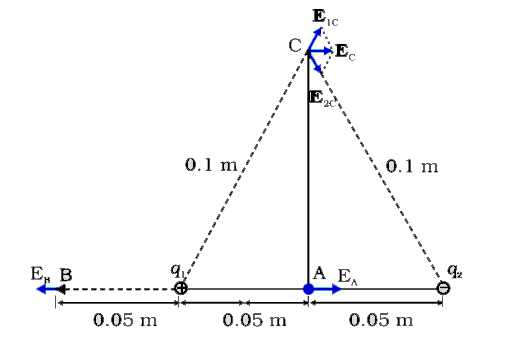
View SolutionTwo point charges q1 and q2 of magnitude + 10−8 c and −10−8 c respectively are placed 0.1 m apart calculate the electric fields at points a, b and c

View SolutionTen positively charged particles are kept fixed on the x-axis at points x=10cm, 20cm, 30cm, …, 100cm. The first particle has a charge 1.0×10−8C, the second 8×10−8 C, the third 27×10(−8)C and so on. The tenth particle has a charge 1000×10−8C. find the magnitude of the electric force acting on a 1 C charge placed at the origin.
View Solution
